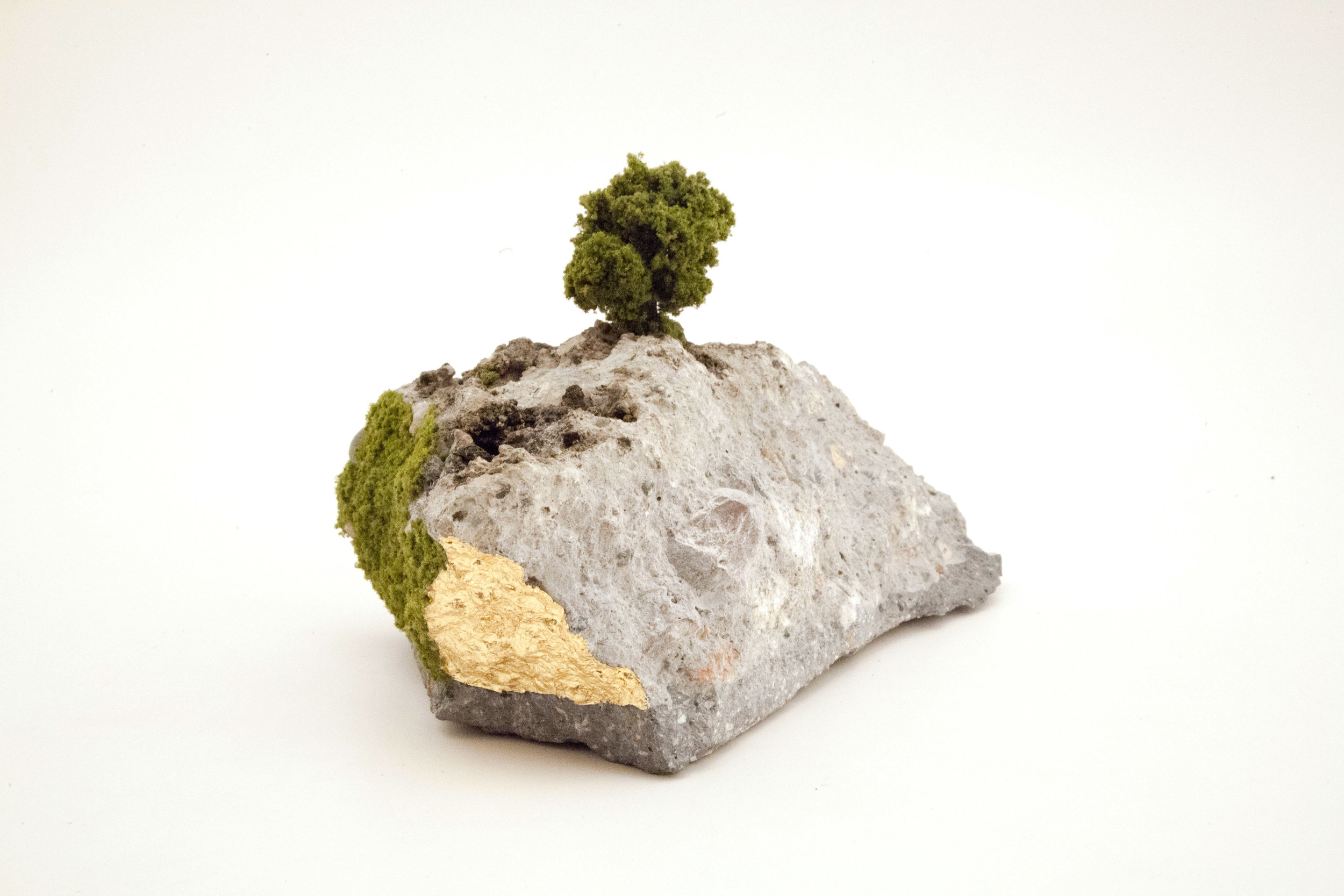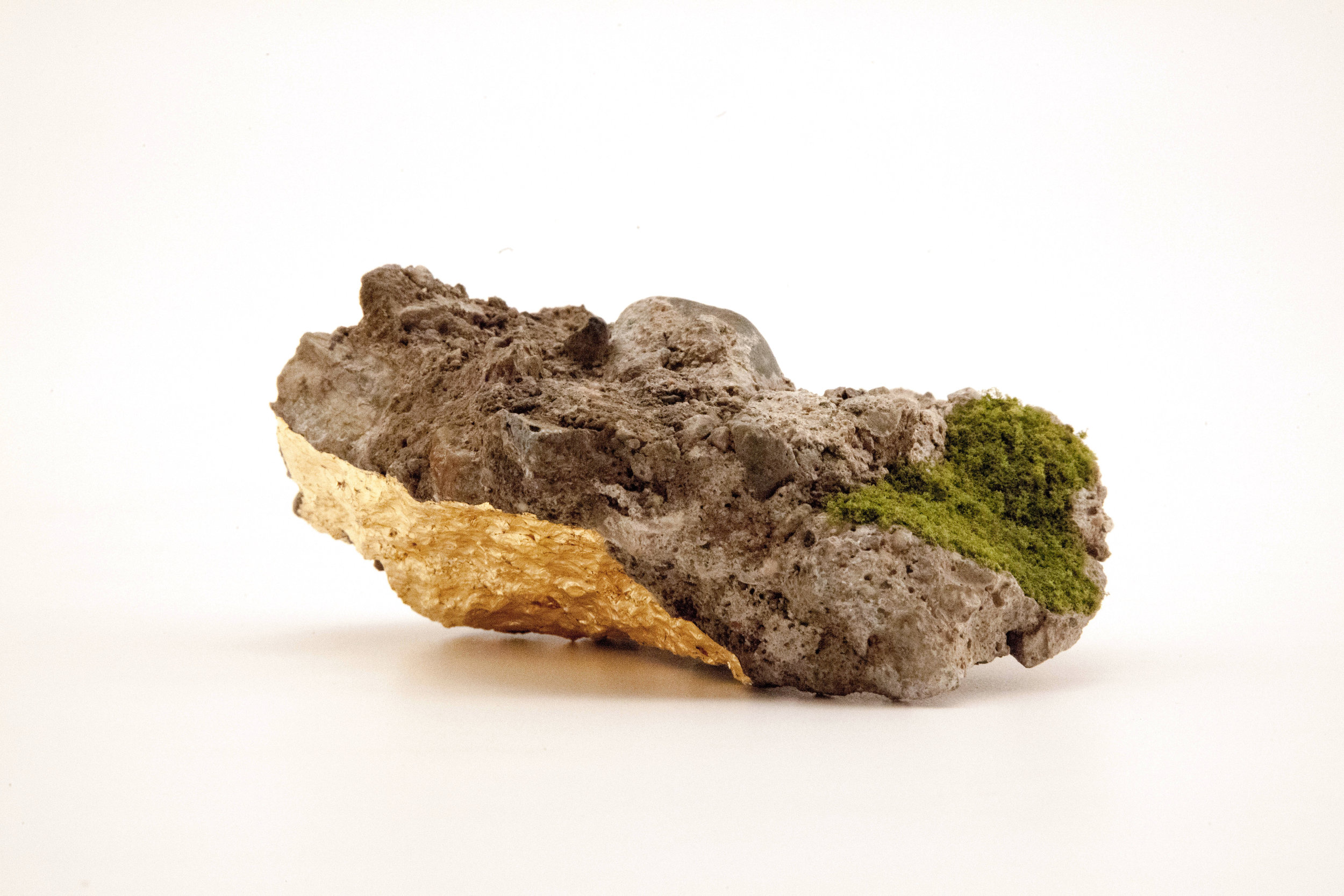It just seems all too neat. Too contrived. Six weeks ago, I set off on a journey, a recommitment to my studio practice that included a location move and Marie Kondo-ing decades of supplies. I brought to the new space only drawing and Sidewalk Series materials, books, and video equipment. And my couch. I knew I would figure out what to do next. I expected it to take much longer. And I never imagined it would spring open, literally, with a hatch door.
Today, the unfounded fears I critiqued in my 2013 thesis work, "Hide:Seek," are now founded. The exhibition seems almost prescient in our COVID-19 world. Look at that overly protected woman with a bonnet dusting the solar panels. Does she have nothing better to do? Or does she so fear being cut off from the grid that she stands guard battling every leaf that could between her and connectivity? Watch her balance on boulders precariously tossed on top of each other one hundred years ago. They weren't meant to be supportive, they were made to keep people out, just like the systems underpinning the U.S.'s economy and healthcare that are now laid bare and crumbling. And that pink bandana she's mending, a mask?
The work of creating fictitious companies that sold water filtration straws alongside fuzzy slippers and inventing characters who prioritized fashion over function manifested my personal and domestic struggles of the time — namely, a failed marriage and generations of fear that wanted to be exorcised from my body. But there were kernels of truth in that work that had always been with me and which continue to sustain my practice today, such as my love of urbanity and imagining alternate realities. They were sown seven years ago and have confirmed my belief in the transformative power of staying with uncertainty, and of working through fear to get to a better place.
Today, I'm the same artist. Still prioritizing fashion. Still wildly imaginative and overly ambitious. I happen to be running a real organization now, a non-profit that attempts to bring the thorny issues of our times and support other artists in their journeys. We make public art. But the fears that sparked the creation of Alone Together Tent Dress and Unpack, and the concerns of running a $1.5M endeavor lurk in the same dark shadows. There, I whisper, " I can't do this alone. Are we on the brink, or is it my imagination? Am I doing enough? And how can we do this better, together?"
Scarcity thinking keeps you and me small. But it doesn't mean we need to put a pencil between our teeth and force a smile. (Ever try it? It works.) It's ok to look at this train wreck before us, to witness the failure of government and of people to protect our most vulnerable. It's ok, and probably a little useful, for us to feel survivor's guilt.
It's also necessary to play.
So, while we wait out the timeline of this pandemic and ponder what public life will look like in the future, I'm committed to acting out these new/old fears that have once again taken hold of my imagination. I'm leaping off of metaphorical rocks, unsure if it means I'm overjoyed or certifiable. Today, I opened the roof hatch. The last time I was on the roof of my apartment modeling Ilumina Tanks, Boston was reopening after the Marathon Bombing. It's a physical place I've been in before. It's mental territory I need to navigate again. I brought my video camera home. I have my sewing machine. And I know what needs to happen next.
I invite you to walk with me as I blunder around in these physical, mental, and digital spaces. I'm not keeping this door locked any longer.














